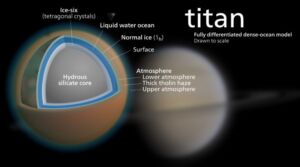
Have you ever wondered what makes up everything around you, from the air you breathe to the chair you’re sitting on? The answer lies in a fascinating scientific theory called the particle theory of matter. This theory, much like a detective story, unveils the tiniest building blocks of our universe – particles so small they can’t be seen with the naked eye.
Imagine yourself as a shrunk-down explorer venturing into the heart of matter. As you zoom in, the seemingly solid chair transforms into a swirling dance of microscopic particles. This is the essence of the particle theory: the idea that all matter, from your favorite chocolate chip cookie to the stardust in galaxies, is composed of incredibly tiny particles.
But the story doesn’t end there. The particle theory dives deeper, explaining how these particles behave and interact, ultimately shaping the world we experience. So, buckle up, fellow explorers, as we embark on a journey into the captivating realm of the infinitely small.
The Founding Fathers of the Microscopic World: A Brief History of the Particle Theory
The concept of matter being made of tiny particles has roots that stretch back centuries. In ancient Greece, philosophers like Democritus proposed the idea of indivisible particles called “atoms.” However, the lack of scientific tools and experimentation kept these ideas largely theoretical.
Fast forward to the 17th century, and scientists like Robert Boyle and Isaac Newton made significant contributions. Boyle’s gas laws hinted at the existence of tiny particles in motion, while Newton’s laws of motion provided a framework for understanding their interactions.
The turning point came in the 19th century with the pioneering work of John Dalton. Through meticulous experiments, Dalton developed the atomic theory of matter, a cornerstone of the particle theory. Dalton proposed several key ideas, including:
- All matter is made of tiny, indivisible particles called atoms.
- Atoms of a specific element are identical in mass and properties, while atoms of different elements are distinct.
- Chemical reactions involve the rearrangement of atoms.
Dalton’s atomic theory, though later revised, laid the foundation for the modern particle theory. Scientists like James Clerk Maxwell and Ludwig Boltzmann further refined the concept, introducing the idea of atoms in constant motion.
The Tiniest Tango: Motion and Attraction of Particles
One of the core principles of the particle theory is that these particles are never truly at rest. They are constantly jiggling around, bumping into each other in a never-ending microscopic dance.
The speed of this dance, however, is not random. It depends on the temperature. As the temperature increases, the particles move faster, and vice versa. This explains why solids become liquids when heated – the increased motion allows the particles to flow past each other more easily.
Another crucial aspect of the particle theory is the concept of interatomic forces. These are the invisible “attractions” between particles, holding them together. Imagine tiny magnets pulling on each other, though the forces are far more complex than simple magnetism.
The strength of these interatomic forces determines the state of matter – solid, liquid, or gas. In solids, the forces are strong enough to hold the particles tightly packed in a fixed arrangement. Liquids have weaker forces, allowing the particles to move around but still stay close together. In gases, the forces are weakest, and the particles are free to move around a lot, with large spaces between them.
Beyond the Atom: Unveiling the Subatomic World
The discovery of the electron in the late 19th century shattered the idea of atoms as indivisible. It turned out that atoms themselves were intricate structures, with even smaller particles whizzing around a central core. This marked the beginning of a new era – the era of subatomic physics.
Scientists like Ernest Rutherford and Niels Bohr unraveled the structure of the atom, revealing a positively charged nucleus surrounded by negatively charged electrons. Further exploration led to the discovery of a whole zoo of subatomic particles, including protons, neutrons, and various types of subatomic “messengers” called bosons.
The modern particle theory acknowledges that atoms are not the fundamental building blocks but rather complex structures made of even smaller particles. These subatomic particles interact according to the rules of quantum mechanics, a fascinating but often counterintuitive theory that governs the behavior of the microscopic world.
The Universe: How Does the Particle Theory Explain Everything?

The particle theory is not just an abstract concept. It has immense explanatory power, helping us understand the physical world around us. Here are a few examples:
- States of Matter: As mentioned earlier, the particle theory explains why solids, liquids, and gases behave differently. It’s all about the motion and interaction of particles at the microscopic level.
- Chemical Reactions: Chemical reactions involve the rearrangement and bonding of atoms. The particle theory sheds light on how these rearrangements occur, allowing us to predict the products of a reaction and design new materials.
- Physical Properties: The properties of a material, such as its hardness, conductivity, and melting point, are all a consequence of the type and arrangement of its constituent particles.
- Our Place in the Universe: Stars, planets, and even our own bodies are all made of the same fundamental particles. Understanding the particle theory helps us comprehend the vastness of the universe and the intricate dance of matter and energy that shapes everything around us.
Beyond the Textbook: Real-World Applications of the Particle Theory
The particle theory isn’t just a dusty concept confined to science textbooks. It has numerous real-world applications that impact our daily lives. Here are a few examples:
- Nanotechnology: This rapidly developing field deals with manipulating matter at the atomic and molecular level. The particle theory provides the foundation for designing and engineering new materials with specific properties, leading to advancements in fields like medicine, electronics, and energy production.
- Materials Science: Understanding how particles interact allows us to develop new materials with tailored properties. For instance, by manipulating the arrangement of atoms, scientists can create stronger, lighter alloys for airplanes or develop new superconductors with zero electrical resistance.
- Chemical Engineering: Chemical engineers rely on the particle theory to design and optimize chemical processes. Knowing how particles behave under different conditions allows them to develop more efficient and sustainable methods for producing chemicals, fuels, and pharmaceuticals.
Looking Ahead: The Future of Particle Theory and Beyond
The journey into the microscopic world is far from over. Powerful particle accelerators like the Large Hadron Collider (LHC) are constantly pushing the boundaries of our knowledge. Scientists are searching for new subatomic particles and exploring the fundamental forces that govern their interactions.
The particle theory is constantly evolving as new discoveries are made. The Standard Model of particle physics, which is the current framework for understanding subatomic particles, might not be the final answer. Scientists are exploring theories like string theory, which proposes that the fundamental building blocks of the universe are not particles but tiny vibrating strings.
Demystifying the Microscopic World: The Power of Curiosity
The particle theory is a testament to human curiosity and our relentless desire to understand the universe. By venturing into the realm of the infinitely small, we gain a deeper appreciation for the world around us. From the seemingly solid chair to the distant stars, everything is ultimately a dance of particles, a symphony governed by the laws of physics.
So, the next time you gaze at the night sky or hold a simple object in your hand, remember the captivating world of particles hidden beneath the surface. The particle theory is a powerful tool that unlocks the secrets of our universe, one tiny particle at a time.



